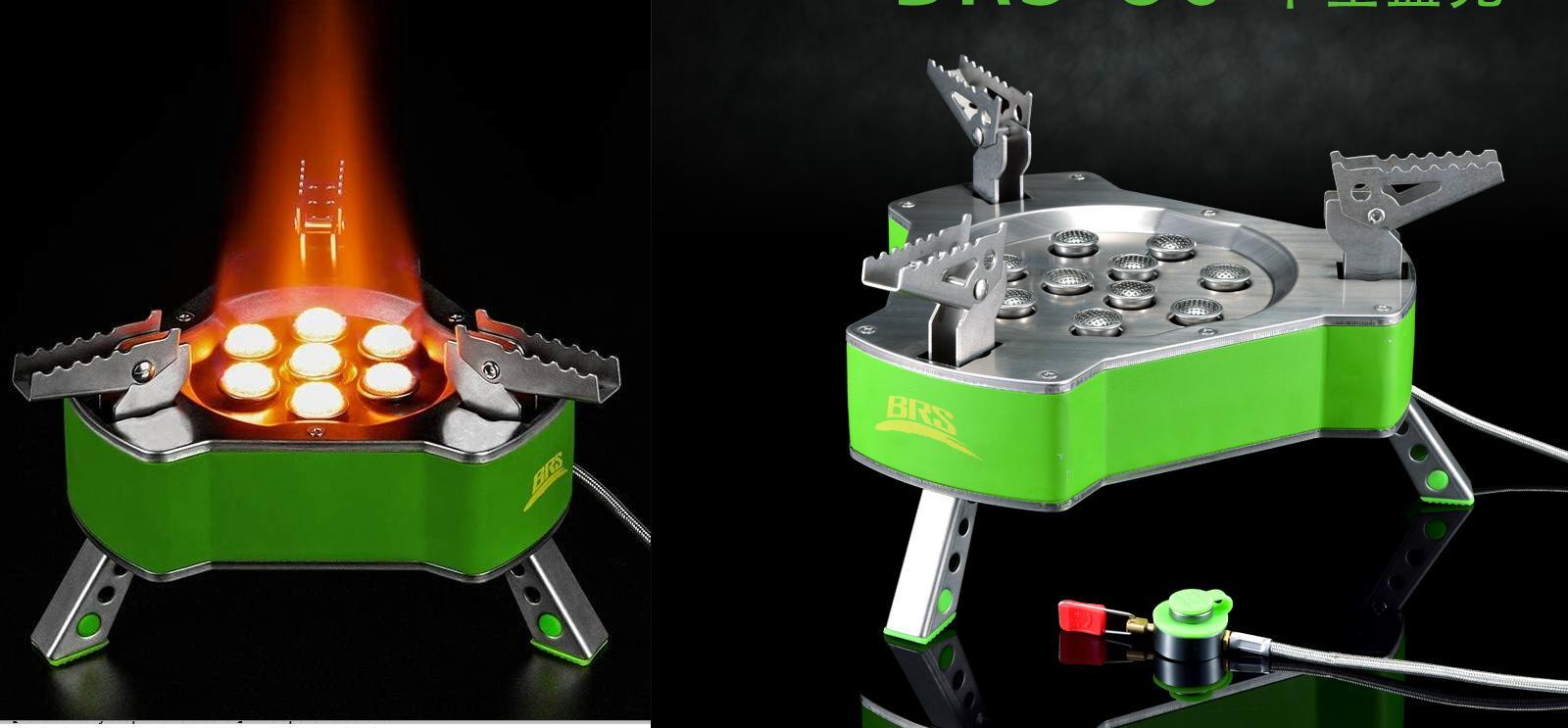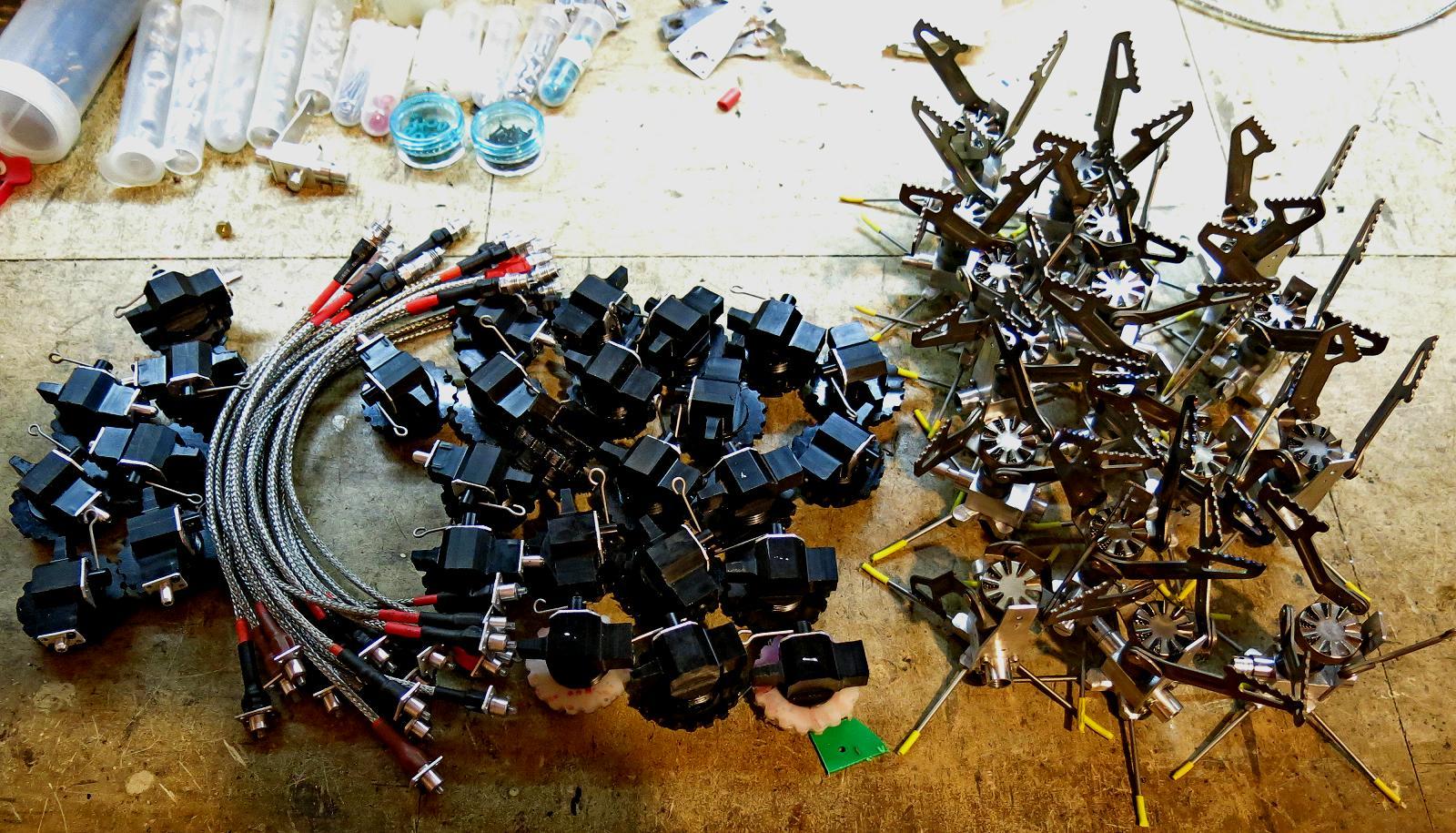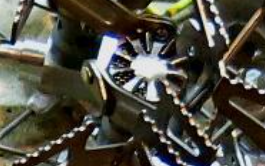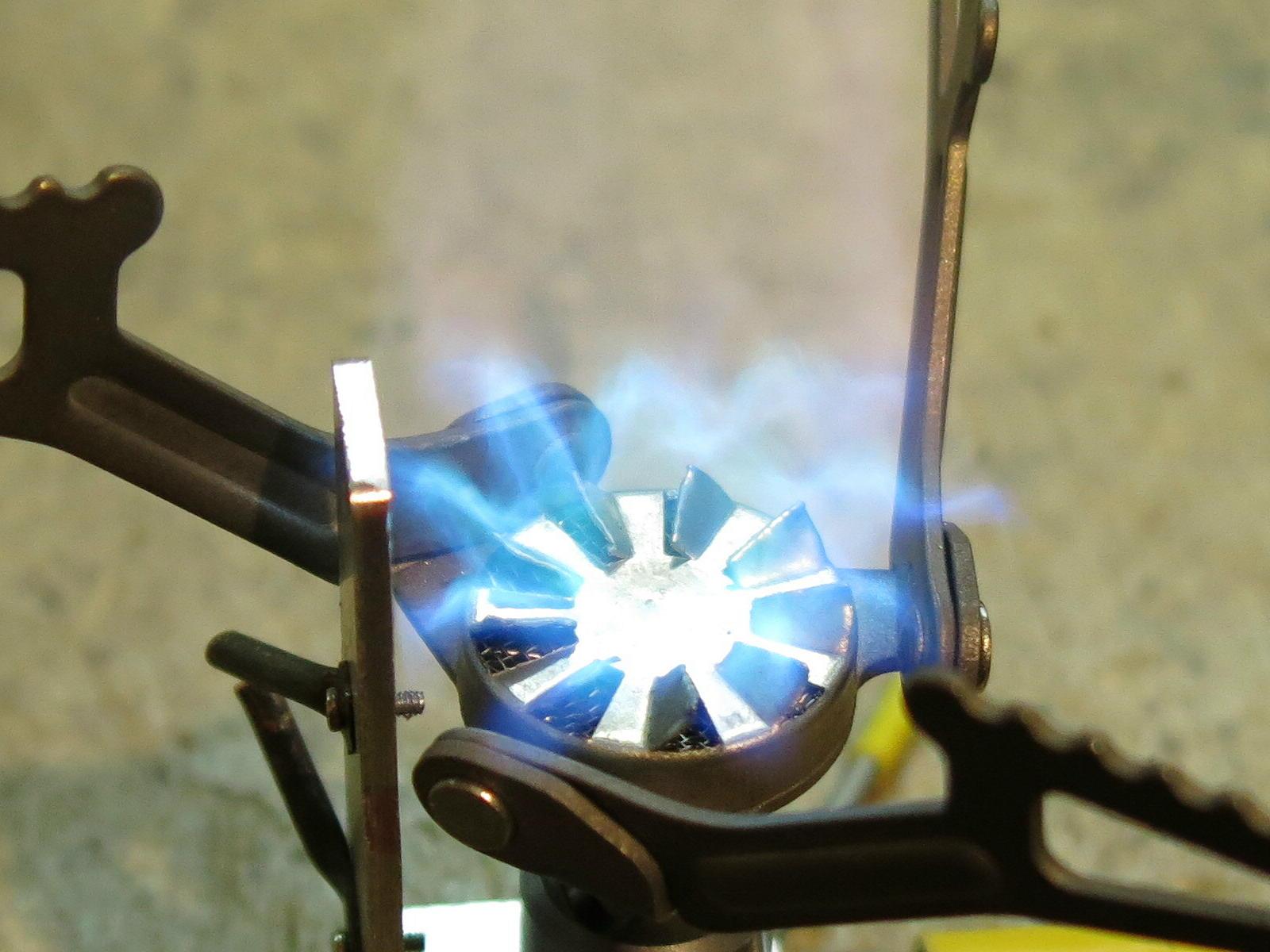Topic
MYOG: SUL Remote Inverted Canister Winter Stove Version 7
Forum Posting
A Membership is required to post in the forums. Login or become a member to post in the member forums!
Home › Forums › Campfire › Editor’s Roundtable › MYOG: SUL Remote Inverted Canister Winter Stove Version 7
- This topic has 96 replies, 18 voices, and was last updated 5 months, 1 week ago by
 Roger Caffin.
Roger Caffin.
-
AuthorPosts
-
Jul 2, 2024 at 10:01 am #3814388
Roger’s stove is an alternative – weighs less than SOTO and MSR
But it isn’t widely available
Jul 2, 2024 at 4:58 pm #3814411It’s not a company like MSR or SOTO that wants to maintain it’s reputation
It’s a very big Chinese outdoors company, manufacturing outdoors gear mainly for the Chinese market. One web site is http://www.futailong.com/ , but it is all in Chinese. Very big company.
They also make bigger stoves, such as the BRS71 and the BRS80:

These ones are many kilowatts (obviously) and are rugged. One wonders how long a standard canister would last driving one of these?on Amazon there are many “brands” for BRS3000. Are those different companies that make them,
There were, at one stage, about twelve (12) different stoves on Amazon, all claiming to be BRS3000-T (I counted them), but only one of them was genuine. A couple were ‘tolerable’ clones, made by would-be’s , the rest were junk made by backyard fly-by-nights. Most of them have gone now.Cheers
Jul 2, 2024 at 7:08 pm #3814413Whats with the different “brands” on Amazon that sell apparently the same thing. Do they all buy from futailong?
Jul 2, 2024 at 7:25 pm #3814414I do NOT think they are the same thing, not at all.
I really doubt the other vendors buy from futailong, but I do not know. Many of the now-gone alternatives looked rather cheaply made to me. Not consistent.
My 2c.
CheersJul 2, 2024 at 9:18 pm #3814418Some of the amazon “brands” are the brsstore.
Maybe those are better
Jul 2, 2024 at 10:12 pm #3814419I dunno. I just checked on Amazon and all I could see were what looked like genuine BRS3000-T stoves, other BRS stoves like the BRS71 (monster!), or other brands like MSR and so on. Could it be that Amazon has cleaned up their act a bit? It would be nice.
Cheers
Jul 2, 2024 at 10:38 pm #3814420So many factors: actual metal alloy, fabrication details, field usage details.
Like other engineering metals, the allowable stress in titanium and its alloys is derated (significantly reduced) at elevated temperatures that are far below the actual melting point of the metal.
For example, pure iron melts at about 2,800 degF. However, grade A106 carbon steel, which is a very common and useful grade for “steel pipe” and is roughly 99% iron, begins to lose tensile strength noticeably near 400F; and the loss becomes dramatic above 700F. This is a HUGE gap below the MP of the alloy.
Other, different alloys of iron are formulated for service at higher temperatures, but they all suffer loss of strength well before melting. One just accepts the use of more expensive alloys and/or thicker metal sections for operating at higher temperatures.
All of which plays into whether our cherry red “steel” stove arms do or don’t fail.
(As an aside, there are also low temperature steel alloys specifically formulated to resist catastrophic embrittlement cracking and shattering due to loss of ductility in colder conditions. This is the opposite problem, as it were, compared to the loss of strength due to “softening” at hotter temperatures.)
Similarly, there is data “out there” for the allowable stress in various titanium alloys as a funtion of T. I’ve used such data for specific Ti alloys for designing huge chemical reactors almost 200 ft tall. One must also be concerned about cyclic fatigue failures. The US Navy funded a lot of the Ti alloy research after some subs sank.
However, I think there is little point for any of us to dig into the specs of various Ti alloys for allowable stress vs T. What stove vendor has ever told us the specific Ti alloy used?
(We do, however, pay attention to Al alloy tensile strength and ductility specs for tent poles and stakes, though we don’t worry much about temperature effects for those.)
Even gram-weenie ultralight backpackers don’t want to deal with a level of tedium involving a 10-page alloy specifications for our stove purchases. The stove either works reliably or it doesn’t.
Do I think even the best manufacturer of ultralight Ti stoves is using a sophisticated “boiler code” engineering specification and auditing protocol for their titanium alloy plate sourcing? No.
Are the good stove suppliers using reliable component quality, whether an iron based alloy or titanium based? Probably.
Also, I believe the well replicated anecdotal evidence that “titanium” arms have yielded on nominal “BRS-3000” stoves, especially under larger pot loads and longer heating times.
I accept that these may possibly have been knock-off stoves using a different grade or purity or thickness of Ti alloy plate.
Caveat emptor.
I have what I think is a genuine BRS-3000. I have not had arm problems using small Jetboil MicroMo or Petrel pots and medium flames, usually for individual boils.
I prefer and normally use a heavier PRD-2 for better wind resistance and ignition simplicity.
Roger’s stove design is cool! I value Jon’s stove understanding beyond my own.
Jul 2, 2024 at 11:52 pm #3814421I think Alan knows more about Ti alloys than me. :)
Could there have been a batch of BRS3000-T stoves made some years ago with the wrong alloy? It is always possible. Given the now-rather-old cluster of failures, the chances increase.
I am minded to point out that the BRS3000-T is not a group stove, for heavy pots. It is a 1 or 2 person stove for use with care. And, imho, for use with a windshield. Caveat user.
Cheers
Jul 3, 2024 at 4:59 am #3814425Thanks, Alan.
I picked a BRS3000 up several years ago and it has performed flawlessly. But, I often head out in early spring/late fall to avoid the crowds. Soo, it is not real convenient at 25F (~ -4C.) Fiddling around with a bowel to hold water is messy, wet and cold at 25. And, I never bring an extra plate/bowl. And, the Molder Strip is mostly excess and fiddly weight.
Roger’s V1 stove is good after inverting the can. Note that a Bic lighter held for a few seconds on the stove body is usually enough to run the stove with the inverted canister from the start. Never had a problem – other than dirt or liquid machine oil(?) in the Jet. All filters were removed and this mostly ended the problem. Anyway, the FM-300T is a good stove.
While I am not real impressed with the BRS, mostly due to some ragged edges on metal work and the anecdotal evidence for support failures, I do not shy away from it. I always boil at low or low-medium, so the support problem never cropped up. I always use a wind screen, so Hiking Jim’s problem never happens. I always get a boil with 4.5-5g of fuel, so Jon’s chart is slightly off. Anyway, I am looking forward to Roger’s stove in this iteration and the BRS burner is not a problem. We will see.
Jul 4, 2024 at 9:16 am #3814475Alan W said:
Also, I believe the well replicated anecdotal evidence that “titanium” arms have yielded on nominal “BRS-3000” stoves, especially under larger pot loads and longer heating times.
I accept that these may possibly have been knock-off stoves using a different grade or purity or thickness of Ti alloy plate.
I’m pretty sure the 7 BRS3000T’s that Ryan used in his Stove bench tests were from the original manufacture. He experienced 4 out of 7 failures.
Jul 4, 2024 at 3:47 pm #3814496However, the few photos I have seen of failures have all shown fairly straight pot support arms and twisted pivot/mounts, like this. Note blue line.

To be sure, that is not acceptable, but it cannot be heat damage as the flames don’t get to the pivot. My guess, and I emphasise ‘guess’, is that excess force was applied and that the bracket was the wrong alloy. It is a bit weird that only one arm of the bracket twisted, rather than all three.
‘Excess force’: it’s a UL stove for 1 or 2 people, not a group stove for handling great big pots. UL gear needs to be handled with (more) care.
All those cases are from long ago. A production hiccup? All the stoves I have bought recently seem fine.
HYOH, BYOG
CheersJul 5, 2024 at 7:46 pm #3814553A Progress Report, of a sort
I make my stoves using a CNC machine: a Computer Numerically Controlled machine, running off a PC running special control programs (which I write).
The first reason is that while I can machine to 0.1 mm on a manual lathe or mill, that is not quite good enough for a stove this small running on propane/butane. Leaks are dangertous. The CNC can machine easily to 0.01 mm; it has a resolution of 0.0008 mm (0.8 microns).
The second reason is that doing the machining by hand to very fine tolerances becomes very tiring after a while, and frankly, somewhat unreliable. The CNC can make 1, 10 or 100 units of anything to 0.01 mm without blinking an eyelid.
So after some months work and many versions of the design and programs, I finally got something which satisfied me. I made a second unit and a third unit, just to check that the stove programs were good. They worked fine, and I have been using those stoves on day walks for morning coffee for some time now. So I thought I would make a batch of stoves for possible sale.

On the right we have stove bodies: my aluminium base and the burner top from a BRS3000-T. In the middle we have completed canister connectors. (There are some incomplete ones on the far left.) And on the left side we have a stack of hose assemblies, to link the two parts. Put them together and we have a bunch of V7 stoves.
I pressure test each stove to make sure there are no leaks (which usually means that there is a bit of swarf left behind at the O-rings). That was fine. Then I ‘burn test’ each stove to make sure every one works. Well, unexpected trouble when I did that. They ‘worked’ but with quite limited power, and not in just one stove but in the several I tested. Not at all what you want in the mountains when you are trying to melt snow into water. What had gone wrong?
Detective work followed. The canister connectors were fine, and the stove bodies were also fine, once properly cleaned out. So the problem had to lie with the hoses. But surely the hoses are very simple? Ah – not really.
The stainless steel braid covering the PFA hose is crimped onto the connectors at each end of the hose. The braid sets the length of the completed hose; the PFA is longer. Left to itself, the PFA hose can move slightly inside the braid, which could be a problem. So on earlier models I inserted a ‘locktube’ into the hose: some stainless steel (hypodermic) tubing with a very tight fit, to lock the hose in place.

This shows the stove end of the hose. The dark grey is the PFA hose, inside the blue ‘Inner sleeve’, inside the orange holding Nut. The light grey hashed stuff outside the PFA hose at the left is the stainless steel braid, and it is crimped onto the Inner sleeve by the green Crimp Ring. The crimp connection has been load tested and is strong.
To stop the PFA hose from moving I insert the red Locktube, which works with the Crimp Ring and very slight compression of the Inner to hold the PFA hose. This worked fine on earlier models. However, the big difference between the V7 and earlier models is the size, or scale. The bore of the PFA hose on the V7 is just 1 mm; the bore of the locktube is about 0.7 mm, but it can be slightly smaller.
On the prototypes the length of the locktubes at each end were very short: only a few millimetres. They were in effect an after-thought. They did not obstruct the flow of fuel very much. The much longer locktubes shown here present a far bigger restriction to the flow: too much in fact.
I removed a couple of locktubes and verified that the flow was restored; that the stove could run at high power. But this left the problem of how to anchor the PFA hose in the Inner more securely. Making the bore of the Inner smaller might work, but testing showed that I could not get the PFA hose through the bore. It jammed.
The Crimp Ring is crimped onto the braid with a sturdy commercial crimp tool, using dies designed for making coax cable connections. Unfortunately this left the PFA hose almost free to move in the Inner. The simple answer was to crimp the crimp ring down just slightly more, compressing the Inner, so it held the PFA hose just a little bit. I tested this by wrapping an already-crimped Ring on a finished hose with some shim and re-crimping: that worked.
But that method is both tricky to do and a bit variable in effect. I need a crimp die just slightly smaller – but such a die does not exist in the catalog. I could try to machine a smaller die out to the required size, but those dies are extremely hard heat-treated steel. Not a good idea, even with carbide cutters.
So I am making some new dies to fit in one of my crimp tools. This takes time: at least another week or two. The designs are a bit tricky as there is limited space in the crimp tool. To those people who want to buy a stove I have to extend my apologies: there will be a slight delay – but they will get their stoves.
Cheers
Jul 6, 2024 at 1:57 am #3814560Slight change of subject: can I glue to PFA tubing or bond PFA tubing to something else?
Easy answer: no. (Reference: DuPont, manufacturer of Teflon, PFA etc)
Long answer, yes, PFA can be bonded to aluminium using good pressure and a temperature of 330 C.
I think that means you have to melt the PFA onto the metal.That said, it is possible to bond to PFA IF you prepare the surface. That means stripping away the fluorine atoms from the surface. That just needs a few chemicals – and a very good fume hood and protective clothing. Yeah, right, seriously dangerous stuff. I just thought you might like to know.
Cheers
Jul 6, 2024 at 5:09 am #3814562I will be out for another week or two, anyway. No big hurry.
I believe you can rough the surface up with 1000 to 2000 grit sandpaper, then add cyanoacrylate glue. This will lock stuff in fairly tight. Think small corrugations in the line. It doesn’t need to stick, it just needs to fill in the connections on the hose. The outer sleeve will prevent expansion soo, it will be gas tight. Sort’a like a clamp on a corrugated pneumatic fitting except in reverse. Try one, it cannot hurt.Jul 6, 2024 at 6:27 am #3814564I observed some imperfections in the brackets the support arms are attached to. See if you can notice them. The last photo has no imperfections, use it as an example of a good one.
Also notice the Heat Shunt, it looks as if the shunt will deflect the flames into the brackets and support arms.




 Jul 6, 2024 at 4:56 pm #3814597
Jul 6, 2024 at 4:56 pm #3814597Hi Jim
I believe you can rough the surface up with 1000 to 2000 grit sandpaper, then add cyanoacrylate glue. This will lock stuff in fairly tight.
A good idea, but not for the stove body. Cyanoacrylate adhesives generally don’t like temperatures much over 100 C. Some say 85 C, some others go a little higher. But that is by way of being at the low end for the stove body temperature.Now, what might work would be the same idea but with a silicone adhesive. They are typically rated to over 200 C, at least. Definitely to be explored. Thank you.
Cheers
Jul 6, 2024 at 5:19 pm #3814598Hi Dan
I observed some imperfections in the brackets the support arms are attached to. See if you can notice them. The last photo has no imperfections, use it as an example of a good one.
I couldn’t see what you are referring to, so I looked instead at the actual stoves on my bench. I still can’t see anything. Could there be some shadows making the effect? Help please.Also notice the Heat Shunt, it looks as if the shunt will deflect the flames into the brackets and support arms.
Now that made me check!
First of all, there are photos of the pot support arms getting red hot when there is a strong wind blowing sideways, so they serve as a guide to ‘hot Ti’. But I have never seen the pivots or brackets or the bottom ends of the pot supports ever looking anywhere near red.So I looked at the flames on the stove. When the stove is very low the flames don’t seem to reach sideways to the brackets; when the stove is turned up the flames shoot upwards and seem to go above the brackets. They seem to mostly miss.

So I expect the Ti metal to get ‘hot’, but not that hot. That is consistent with the lack of visible red.
The same applies to the effect of the Heat Shunt: the deflection seems to push the flames upwards, not sideways onto the brackets. That would be the momentum of the gas. So that does not seem to be a problem.
Also, while it may be my imagination, it does seem to me that the flames hitting the Heat Shunt are not quite as strong as the rest. If true, that could be due to a small amount of back pressure affecting the gas flow within the burner head. Maybe.
Cheers
Jul 7, 2024 at 6:23 am #3814622Roger, I looked the temp up, having used it in the past to lock the head of the FM300 stove and according to a manufacturer (quoted from the site):
Gap-fill ranges for cyanoacrylates are 0.015mm (0.006″) to 0.5mm (0.02″).
Temperature resistance ranges from -55 to +250°C (-55 to +482°F).
Viscosity ranges from wicking grade to thixotropic no-flow gel
Specialty Grades
Metal Bonding
Plastic Bonding
Low Odor – Non-Blooming
Surface Insensitive – for Acidic Surfaces
High-Temperature Resistant
Toughened – for Improved Impact Resistance
NSF Non-Food Compound P1Note the high temp resistance. The old FM300 is still locked in and working fine after three years of use.
The silicone sounds a bit better, though. I will need to get some and try it…
Jul 7, 2024 at 5:31 pm #3814648Hi Jim
Enquiring minds want to know: what cyanoacrylate goes to 250 C?
PLEASE!Cheers
Jul 8, 2024 at 5:08 am #3814669I believe there are a lot of different manufacturers. Here is one I use:
https://www.permabond.com/products/cyanoacrylate-adhesives/
It works pretty well for most applications. It can create a mess, so keep acetone (nail polish remover) handy. They make several grades for rather high heat.Normally, the stove body is less than flame temps, since it creates a cooling circulation around the stove base. I’m sure you knew that stuff.
Jul 8, 2024 at 5:13 am #3814670I never bothered with a two stage process as they recommend. The old FM300 does fine without all the fussing.
Jul 8, 2024 at 7:53 am #3814673Testing:
Relative performance compared to some of the previous generations of stoves and/or something like the FMS-117H Blade 2 would be nice to see.
i still have an early version of your stove with the FMS-116T burner head and I find the stove supports feel small for anything bigger than say, a 750ml Ti pot.For me, a winter stove suggests the ability to handle a decent sized pot (1.5L) for snow melting if required.
Jul 8, 2024 at 4:49 pm #3814702Hi Jim
I actually contacted Permabond and asked them if they had anything which could handle 200 C, and maybe PFA. Negative on both. The specialist there agreed that slight mechanical roughing and silicone would be the best solution, but not very strong.
Cheers
Jul 8, 2024 at 4:56 pm #3814703Hi Jeff
Yes, I too use a 1.5 L Ti pot, but I am cooking for two (wife & me). Not a problem: I hold the pot with a UL pot grabber when stirring.
This also works for melting snow: once I have some warm water in the pot I just keep feeding more snow in, bit by bit.When the stove is running, my full attention is on it anyhow, so looking after it is part of the game.
Cheers
Jul 8, 2024 at 7:25 pm #3814710To bad, it sounded simple, but I guess not viable.
-
AuthorPosts
- You must be logged in to reply to this topic.
Forum Posting
A Membership is required to post in the forums. Login or become a member to post in the member forums!
Trail Days Online! 2025 is this week:
Thursday, February 27 through Saturday, March 1 - Registration is Free.
Our Community Posts are Moderated
Backpacking Light community posts are moderated and here to foster helpful and positive discussions about lightweight backpacking. Please be mindful of our values and boundaries and review our Community Guidelines prior to posting.
Get the Newsletter
Gear Research & Discovery Tools
- Browse our curated Gear Shop
- See the latest Gear Deals and Sales
- Our Recommendations
- Search for Gear on Sale with the Gear Finder
- Used Gear Swap
- Member Gear Reviews and BPL Gear Review Articles
- Browse by Gear Type or Brand.













